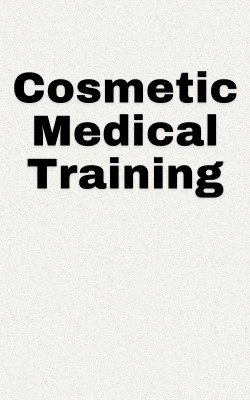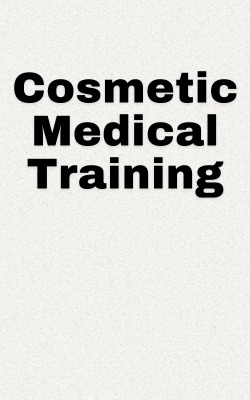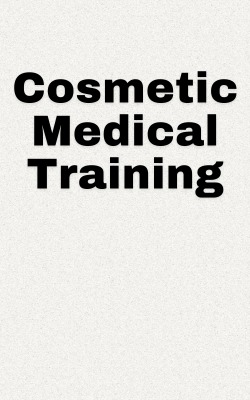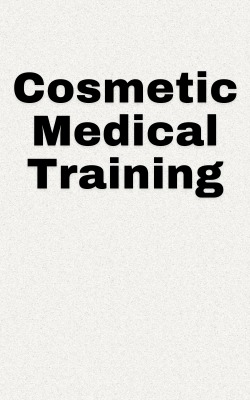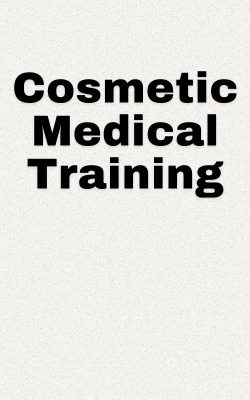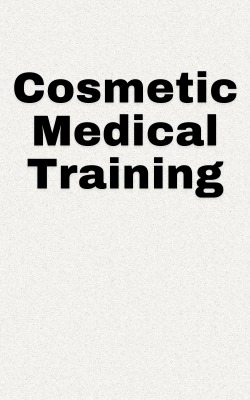
Jeuveau Certification & Jeuveau Training Course
- Nov 14, 2024
- | 6
Cosmetic Medical Training provides you with our FREE Jeuveau Certification Training Manual. Please contact us for your hands-on Jeuveau training.
How to Inject Jeuveau®: a Beginner’s Guide to Jeuveau Certification
What is Jeuveau®?
Jeuveau® is a purified botulinum toxin made by a company called Evolus that temporarily relaxes the muscles that cause wrinkles on the face. Jeuveau® works on the neuromuscular junction by blocking the release of acetylcholine which prevents the contraction of the muscle. Jeuveau® enters the nerve terminal and cleaves a protein called SNAP-25, which is essential to the release of acetylcholine in the nerve endings. Jeuveau® reduces muscle activity through this partial chemical denervation. Over time, axonal sprouting of the nerve and extrajunctional acetylcholine receptors restores the function of the neuromuscular junction.
Jeuveau® was FDA-approved in 2019 “for the temporary improvement in the appearance of moderate to severe glabellar lines associated with corrugator and/or procerus muscle activity in adults”. Injection of other areas besides the glabellar lines by Jeuveau® is off-label.
Much like Botox®, Jeuveau® takes up to 7 days for full results. The relaxation of the muscle may last 3 to 4 months. The main difference between Jeuveau® and Botox® is that Jeuveau® has a different purification process in preparation. The efficacy was tested in a head-to-head clinical trial which concluded that “20 U prabotulinumtoxinA was safe and effective and noninferior to 20 U onabotulinumtoxinA for the treatment of moderate to severe glabellar lines”.
Contraindication
Jeuveau® is contraindicated in the following:
- Known Hypersensitivity to Botulinum Toxin
- Infection at the Injection Site
Warnings
Jeuveau® is observed to spread beyond the site of the injection. Symptoms such as asthenia, generalized muscle weakness, diplopia, ptosis, dysphagia, dysphonia, dysarthria, urinary incontinence, blurred vision, and breathing difficulties have been observed to occur within hours to weeks. There have also been reports of deaths related to the spread of toxin. These symptoms have been reported hours to weeks after injection. Swallowing and breathing difficulties can be life-threatening and there have been reports of death related to the spread of toxin effects, including excessive weakness, dysphagia, and aspiration pneumonia
Serious hypersensitivity reactions including anaphylaxis, serum sickness, urticaria, soft-tissue edema, and dyspnea. This may lead to serious life-threatening allergic reactions.
There are reports of serious cardiovascular events including arrhythmia and myocardial infarction, some with fatal outcomes. Cautions must be used in patients with pre-existing risk factors.
Patients with peripheral motor neuropathy diseases, amyotrophic lateral sclerosis or neuromuscular junction disorders may experience excessive weakness, diplopia, ptosis, dysphonia, dysarthria, severe dysphagia, and respiratory compromise from typical doses of JEUVEAU. These patients were excluded from their clinical trials and should not be injected with Jeuveau.
Patients injected with Jeuveau® may experience swallowing or breathing difficulties and high-risk patients with pre-existing conditions should be avoided. Death has been reported due to these compilations. Dysphagia lasting for months may require feeding tube insertions. Patients may also require ventilation if accessory breathing muscles are affected.
Dry eyes or lid ptosis has also been reported related to the use of botulinum toxin in the glabellar area.
Jeuveau® contains human albumin. There is an extremely rare risk for transmission of viral diseases and variant Creutzfeldt-Jakob disease (vCJD) based on theoretical risk. No cases of viral diseases or CJD have ever been documented with the use of botulinum toxin.
Jeuveau® has not been tested on the human pregnant population. Studies on pregnant laboratory rats showed no ill effects on developing fetuses. There are also no studies on the presence of Jeuveau® in human milk. You should carefully screen patients who are either pregnant or breastfeeding before injecting Jeuveau.
Jeuveau® has not been studied in the pediatric population. Clinical trials included patients older than 65 years of age, but the numbers were insufficient to determine dose-response comparison to the younger population.
Reconstitution and Handling
Jeuveau® (prabotulinumtoxinA-xvfs) is supplied as 100 units in a vial with vacuum-dried powder. Jeuveau® should be stored in a refrigerator between 2° to 8°C (36° to 46° F). Evolus recommends that you reconstitute the vial with only sterile, preservative-free 0.9% Sodium Chloride Injection. This will give you a reconstituted solution at a concentration of 4 Units/0.1 mL or a total treatment dose of 20 Units in 0.5 mL. When you use 0.9% preservative-free 0.9% Sodium Chloride, you should use the newly reconstituted Jeuveau® within 24 hours. The vial should be kept in the refrigerator and not frozen. The package insert states “after reconstitution, Jeuveau® should be used for only one injection session and for only one patient. Discard any remaining solution after administration.” This implies that the entire vial of Jeuveau® should be used for one injection session for one patient. This is not what typically happens in the real world as most injectors use it as a multi-use vial.
2.5cc of Preserved 0.9% into Jeuveau® vial will make the following concentrations in your reconstituted vial of Jeuveau®:
100 units per 2.5cc
20 units per 0.5cc
4 units per 0.1cc
Although the manufacturer, Evolus, recommends using non-preserved 0.9% Sodium Chloride, most practitioners use preserved 0.9% Sodium Chloride. Preserved (Bacteriostatic) 0.9% Sodium Chloride has shown to increase the activity of the botulinum toxin protein for up to 6 weeks when stored at 4°C (As recommended by Consensus Recommendations on the Use of Botulinum Toxin Type A in Facial Aesthetics).
Additional dilution options will be discussed during your hands-on Jeuveau certification and Jeuveau Training class.
Patient Consultation
Prior to your injection, you must obtain a detailed medical history from your patient. This includes pertinent history about prior use and experience with any other botulinum toxin. Your patient should be given the complete information regarding Jeuveau® and a consent form should be signed detailing the risks and benefits of the treatment. Take a good before photo under good light to record the patient’s face prior to the treatment. Discuss with your patient any asymmetry of the face prior to the injection. Set realistic goals and educate your patient. Ideally, you should under-promise and over-deliver. Additional consultation techniques will be discussed during your hands-on Jeuveau certification and Jeuveau Training class.
Glabella (Frown Lines) Jeuveau Certification
Muscles Involved
The procerus muscle and the corrugator muscles make up the two main muscles that you will inject into the glabellar complex. The procerus originates from the nasal bone and attaches to the medial forehead & skin of the brow. The action of the procerus draws the medial brow down inferiorly. The corrugator originates from the medial superciliary arch and inserts into the skin of the medial forehead. The action of the corrugator draws the brow medially and inferiorly.
Injection Technique
Glabellar injections are deep intramuscular injections where the needlepoint depth should be near the periosteum. Since the frontalis muscle overlaps the glabellar complex superficially, a superficial injection can paralyze the frontalis muscle and cause the patient’s eyebrow to feel heavy. Conversely, a deep injection can cause you to dull your needle tip by hitting the periosteum. The angle of the needle should be perpendicular to the surface of the skin.
Landmarks:
Medial corrugator injection = 1 cm above the bony orbital rim and vertical to the medial canthus
Lateral corrugator injections = 1 cm above the bony orbital rim and around 0.5cm medial to the vertical mid-pupillary line
Procerus injection = immediately above the crossing point of the X formed by drawing a line from the medial eyebrow to the contralateral medial canthus.
20 units are the standard FDA approved injection for the Glabellar lines as found in the Jeuveau® package insert.
Please note that patients with strong glabellar muscles may require 1-2 additional units per injection site. Additional clinical pearls will be discussed during your hands-on Jeuveau certification and Jeuveau Training class.
Clinical Research
In two double-blind studies, 654 patients were injected with Jeuveau® and evaluated by the investigator and self-reported by the subject for efficacy at 30 days. In trial EV-001, 68% rated improvement of their frown line at or above moderate. In trial EV-002, 70% rated the improvement of their frown line at or above moderate.
Complication
According to Evolus, Jeuveau® was used on 654 patients and the complication rates are as follows:
- Headache (12%)
- Upper Respiratory Tract Infection (3%)
- Eyelid ptosis (2%)
- White Blood Cell count increase (1%)
Please note that injection lateral to the mid-pupillary line may cause brow ptosis. Also, injection too close to the orbital rim can cause lid ptosis by paralyzing the levator palpebrae superioris muscle. Usually, complications will be seen in 48 hours to 7 days. The effects of the complication may last up to 4 – 8 weeks.
Iopidine 0.5% drop, one drop to affected eye TID is usually prescribed for patients with eyelid ptosis. Iopidine is believed to stimulate Mueller’s muscle to minimize the ptosis.
Frontalis (Horizontal Forehead Lines) Jeuveau Training
Muscle involved
The frontalis muscle is a superficial muscle that varies in shape and size. Rather than relying on the surface landmarks of visible wrinkles, you must use your fingers to palpate the muscle to identify the proper outline. The muscle may be tall or short, narrow or broad, and v-shaped or square-shaped. We will go over the methods to correctly identify the shape of the frontalis muscle during your hands-on Jeuveau training session.
The frontalis muscle originates at the galea aponeurosis and inserts into the muscles of the glabellar complex. The main action is to lift the eyebrows superiorly and depress the scalp inferiorly. The fibers of the frontalis muscles are oriented vertically.
Injection Technique
All injections are intramuscular. However, since the skin is thin and there is no other major structure on the forehead, you can angle your needle at a 45-degree angle like a subcutaneous injection. All injections should be at least 2 cm apart. The lower 3 – 4 cm of the frontalis muscle plays a large role in elevating the eyebrow; therefore, injections here should be avoided. The medial portion of the frontalis may be fibrous and lack muscle fibers.
There is great debate about the amount of Jeuveau® to inject in this area. Allergan states in their package insert that 4 units should be injected in 5 injection spots. An article from 2004 titled “Consensus recommendations on the use of botulinum toxin type in facial aesthetics” recommends that we start with a lower dose of Botox: 2 units per injection site. The actual amount truly depends on the patient’s prior experience and the strength of the frontalis muscle.
Complication
Since injection of the frontalis is an off-label indication for Jeuveau, there is no research data. According to Allergan, Jeuveau® was used on 665 patients and the complication rates are as follows:
- Headache (9%)
- Eyelid ptosis (2%)
- Brow ptosis (2%)
- Skin tightness (2%)
Brow ptosis may happen for many reasons. Commonly, an injection too low on the frontalis may cause this. Also, a person who has a hyperfunctional frontalis (a person who always uses the frontalis when opening their eyes) will feel that their eyebrows will feel heavy. Finally, this can happen if your patient requests that you inject only the frontalis without glabellar treatment. This will cause unopposed glabellar activity which will depress the eyebrows.
A Spock brow or Mephisto sign can happen if the lateral fibers of the frontalis muscles have not been properly paralyzed. Depending on the strength of the muscle, you may inject 1 – 2 units in the area of the greatest muscle activity to smooth out these wrinkles.
Orbicularis Oculi (Crow’s Feet) Jeuveau Certification
Muscles Involved
The orbicularis oculi is a single circumferential muscle. It originates from the medial palpebral ligament and inserts into the lateral palpebral raphe, corrugator, frontalis, and depressor supercili. The action is to pull the skin of the forehead, temple, and cheek towards the medial angle of the orbit.
Injection Technique
The skin around the lateral edge of the eyes is thin and there are no other structures in this area. Therefore, you can angle your needle at 45 degrees and inject it like a subcutaneous injection. However, this injection is still intramuscular. Place your injection at least 2 cm apart in a triangle shape. Inject at least 1 cm outside of the bony rim to avoid the spread of Jeuveau® into the lateral rectus muscle.
This injection technique is a subcutaneous injection 1cm apart in a slightly curving arch. There is great debate about the amount of Jeuveau® to inject in this area. Allergan states in their package insert that 4 units should be injected in 6 injection spots. An article from 2004 titled “Consensus recommendations on the use of botulinum toxin type A in facial aesthetics” recommends that we start with a lower dose of Botox: 3 units per injection site. The actual amount truly depends on the patient’s prior experience and the strength of the orbicularis oculi muscle.
Complication
Since injection of the crow’s feet is an off-label indication for Jeuveau, there is no research data. According to Allergan, Botox® was used on 526 patients and the complication rates are as follows:
- Eyelid edema (1%)
Other rare side effects are asymmetrical smile or diplopia due to migration. You can help avoid this by injecting at least 1 cm outside of the bony rim, but not close to the zygomatic arch.
Jeuveau Certification & Jeuveau Training Course
For more information contact us at email@CosmeticMedicalTraining.com or call us at (212)470-8059
Statement of Responsibility
Cosmetic Medical Training recognizes that many of the techniques and recommendations are for procedures which are considered off-label use. Our recommendations are based on many text books, published articles, seminars and practical knowledge and experience. The authors have attempted to maintain up to date knowledge and information in this training manual with the current standard of care. However, due to the continuing flow of new research and information relating to the drugs being used in this course, we recommend that you check with the manufacturer for any changes in the package inserts, warnings and precautions. All information and tools presented within this site are intended for educational purposes. We do not guarantee that the information will be completely accurate and up to date; therefore the authors will not be held responsible for any errors, omissions or inaccuracies published. Application of the knowledge is ultimately the responsibility of the practitioner.
Originally published at Jeuveau Training in Baltimore

